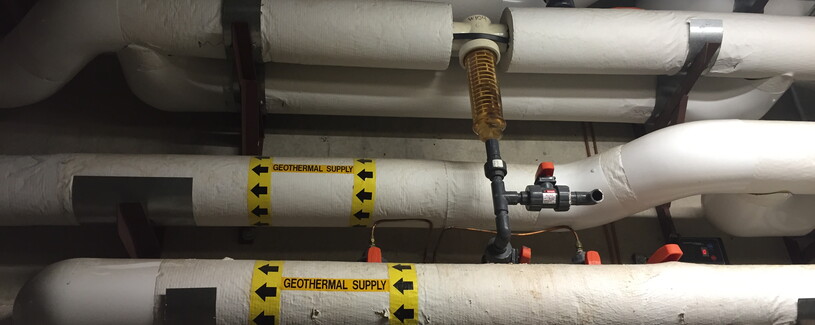Seeking Heat
Uncovering the potential of renewable thermal technologies in Connecticut’s climate ambition

Connecticut has a climate goal: reduce greenhouse gas emissions to 80 percent below 2001 levels by 2050. This goal is as ambitious as it is necessary. Water levels in the Long Island Sound are rising while stronger and more frequent weather events are threatening $570 billion worth of insured properties on Connecticut’s shoreline. “Ultimately, we have to find a cleaner way to do things,” said Governor Dannel Malloy this July while speaking at the first meeting of the Connecticut Climate Change Council. The projections mandate action.
One prospect, often overlooked, is the potential of renewable thermal technologies—essentially putting available heating and cooling to practical use—in this fight against climate change. “Thermal technologies may not seem as exciting as new technologies, for instance, offshore wind. Nor are they as visible as something like solar photovoltaics,” said Helle Gronli, associate research scientist at the School of Forestry & Environmental Studies and director of the Feasibility of Renewable Thermal Technologies in Connecticut project (FORTT). As a result, Connecticut’s view of options to meet climate targets has, for the most part, missed one important question: what’s the potential for converting from fossil fuels to renewable thermal technologies?
FORTT intends to answer this question. Started in September, the program has set out to map Connecticut’s regulatory and market landscape with respect to renewable thermal technologies. What incentives might help increase private investment in and adoption of these technologies statewide? What contribution might they make to climate targets under ideal conditions in different sectors? For instance, Connecticut’s residential sector alone accounts for about 20 percent [pdf] of the state’s carbon dioxide emissions, much of which is generated through heating and cooling; about half of Connecticut’s houses use oil heating, with most of the rest using natural gas. How might renewable thermal technologies be deployed to reduce this 20 percent?
The interrogation of these questions draws on a broad spectrum of available technologies, from single building-scale interventions, like ground source heat pumps and solar thermal water heaters, to larger interventions that take into account district-level heating and cooling systems. “What’s interesting about renewable thermal technologies is that you really have to look at it as a part of the whole energy system,” said Gronli. “If you build infrastructure for thermal energy you can utilize excess heating and cooling in one building moved to another. You can connect buildings and different energy technologies to provide flexibility to utilize the energy sources that are cheaper and cleaner at all time.” FORTT, eventually, hopes to quantify the ability of this ‘interplay’ to mitigate greenhouse gas emissions.
Gronli and a team of student research assistants are now in the earliest stages of the project, working in partnership with the Yale Center for Business and the Environment and the Connecticut Green Bank. Check out the webpage for more information and intermittent updates on their work.